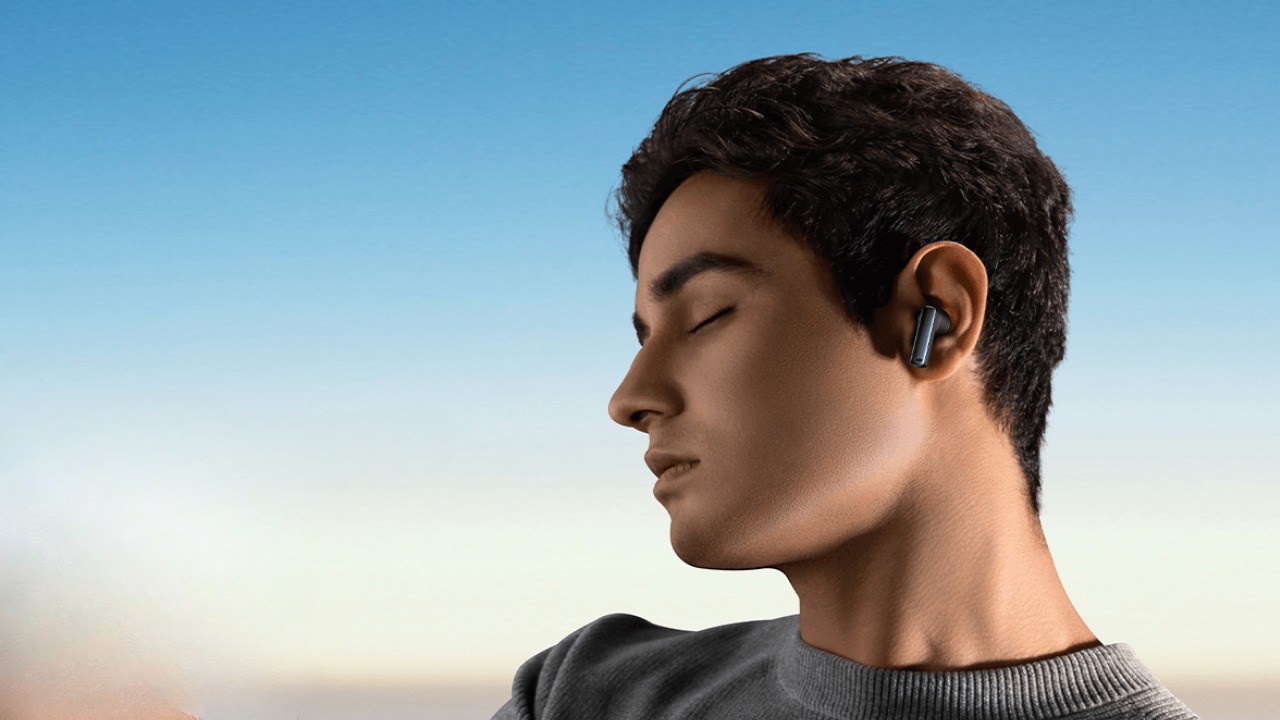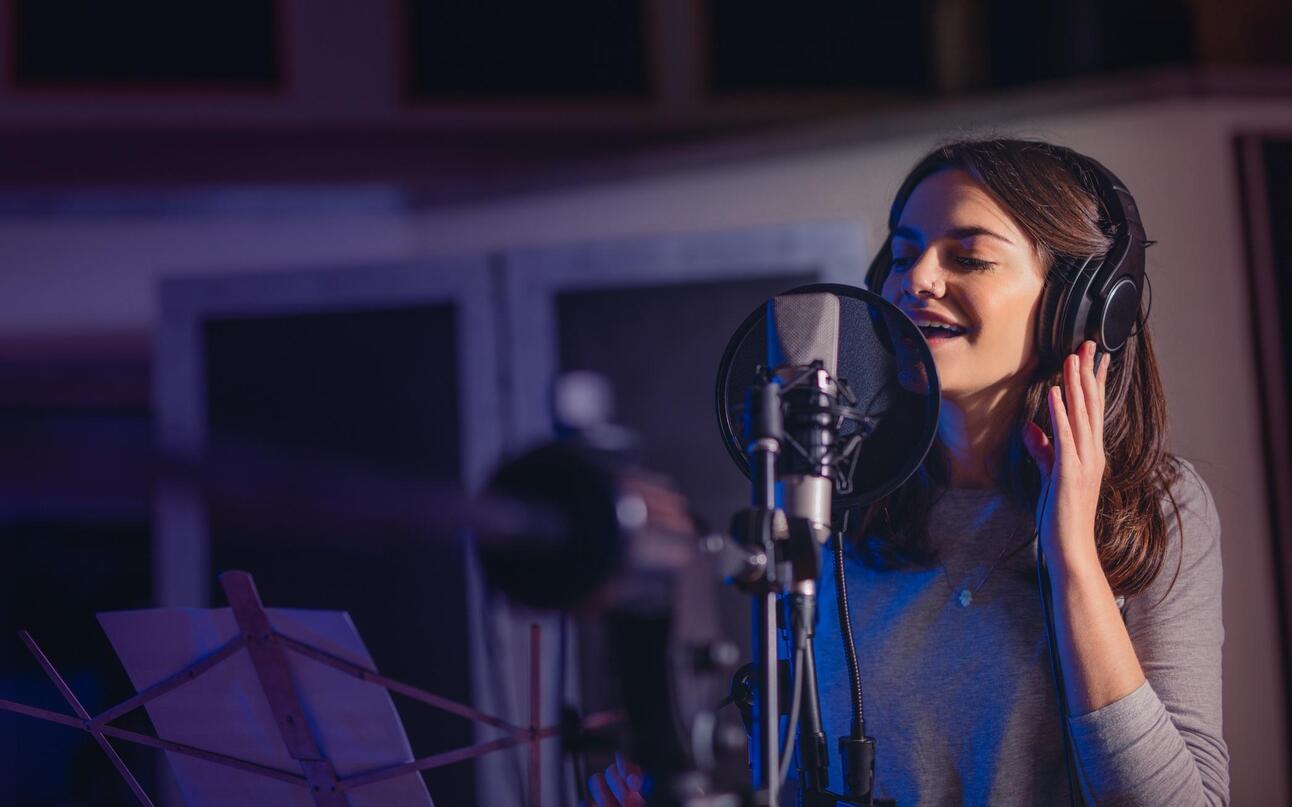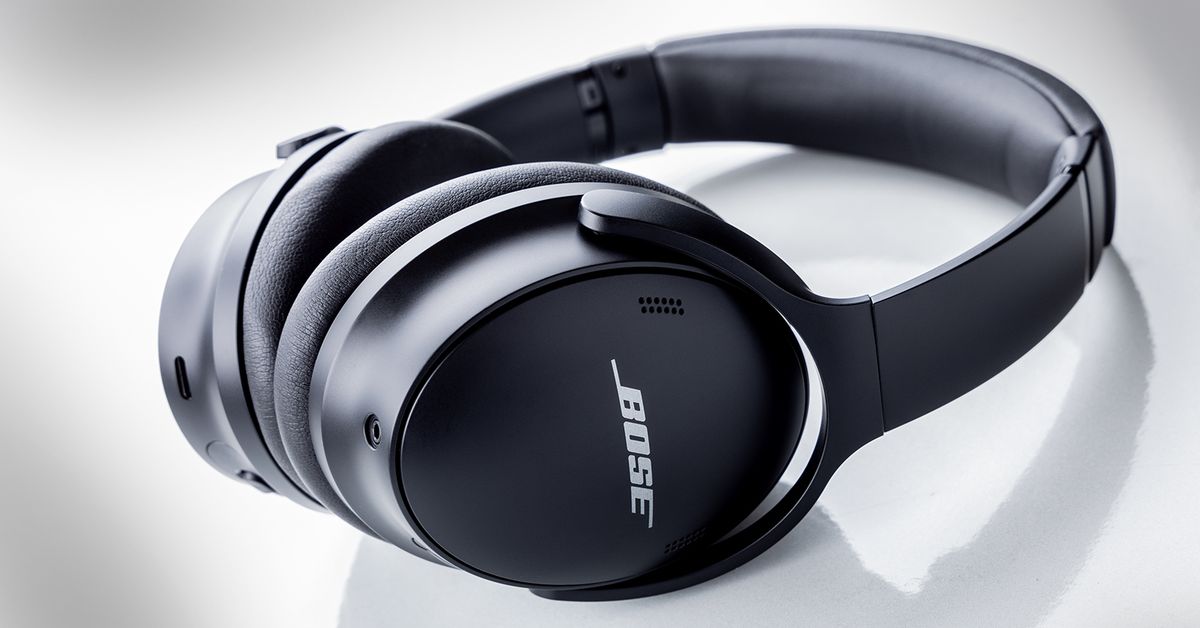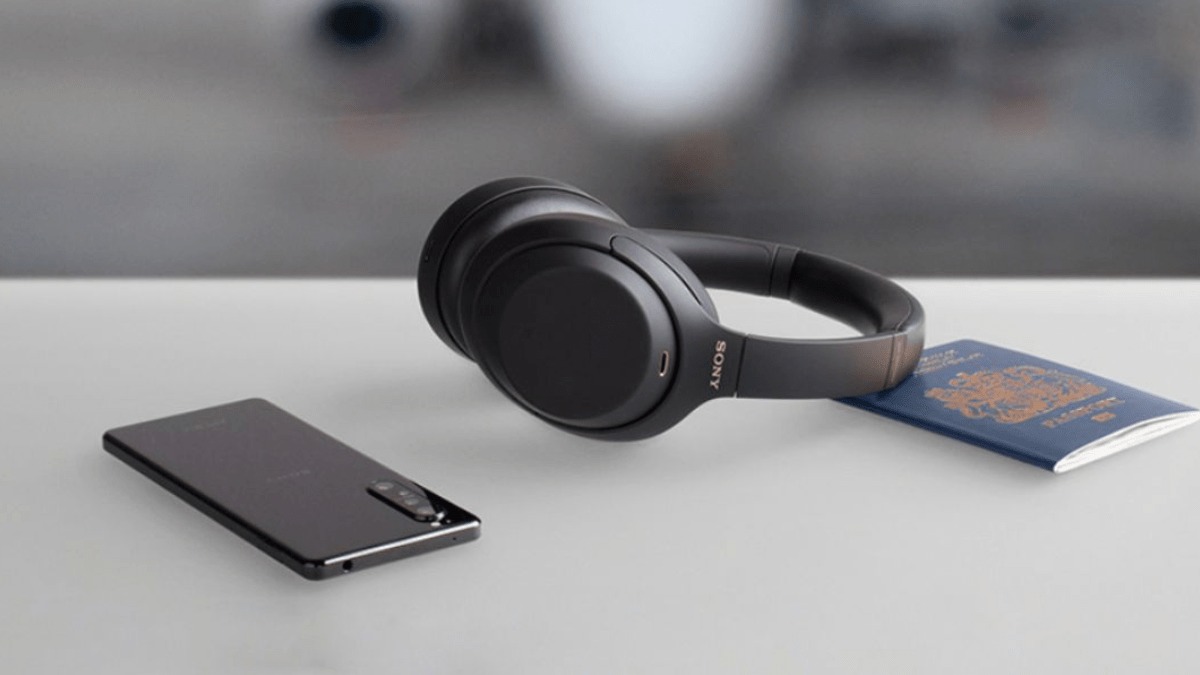Home>Production & Technology>Noise Cancellation>What Is The Difference Between Noise Cancellation And Noise Isolation


Noise Cancellation
What Is The Difference Between Noise Cancellation And Noise Isolation
Modified: January 22, 2024
Discover the key distinction between noise cancellation and noise isolation. Learn how noise cancellation technology can enhance your audio experience.
(Many of the links in this article redirect to a specific reviewed product. Your purchase of these products through affiliate links helps to generate commission for AudioLover.com, at no extra cost. Learn more)
Table of Contents
Introduction
In a world filled with constant noise and distractions, finding a way to escape the clamor and enjoy some peace and quiet is becoming increasingly important. This is where technologies like noise cancellation and noise isolation come into play. Whether you want to focus on a task, enjoy your favorite music without interference, or simply relax in a serene environment, understanding the difference between noise cancellation and noise isolation can help you make the best choice for your needs.
Noise cancellation and noise isolation are two distinct techniques that aim to minimize unwanted external sounds and improve the audio experience. While they may sound similar, they work in different ways and offer unique advantages. In this article, we will delve deeper into the definitions, functionalities, and key differences between noise cancellation and noise isolation.
Before we explore the intricacies of these technologies, it is essential to understand the fundamental concepts behind noise cancellation and noise isolation. By familiarizing yourself with these terms, you will be better equipped to make informed decisions and enhance your overall audio experience.
Definition of Noise Cancellation
Noise cancellation is a technology that actively reduces or eliminates unwanted external sounds to create a quieter and more immersive auditory experience. It utilizes a combination of hardware and software to analyze ambient noise and generate an opposing sound wave, known as an anti-noise or cancellation signal, to counteract the incoming noise.
The cancellation signal is designed to be the exact mirror image of the ambient noise, effectively neutralizing its impact. This technique is often referred to as “destructive interference” because the cancellation signal interacts with the original sound waves, causing them to cancel each other out.
Unlike noise isolation, which relies on physical barriers to block external sounds, noise cancellation actively modifies the audio environment in real-time. This makes it especially effective in environments where there are continuous or unpredictable noises, such as airplane cabins, busy offices, or crowded public spaces.
Noise cancellation technology can be found in a variety of devices, including headphones, earphones, and even smartphones. These devices incorporate microphones to capture external sounds and specialized circuitry to generate the cancellation signal. The result is a significantly quieter audio experience, allowing you to enjoy your music or conversations without the intrusion of unwanted noise.
Definition of Noise Isolation
Noise isolation, sometimes also referred to as passive noise cancellation, is a technique that aims to block external sounds by physically obstructing them from reaching your ears. It relies on the design and construction of the device itself to create a barrier between your ears and the ambient noise.
Unlike noise cancellation, which actively generates anti-noise to counteract external sounds, noise isolation primarily focuses on reducing sound transmission through the use of physical materials and sealing mechanisms. This is achieved through the use of specialized materials, such as foam or rubber, that are designed to provide a snug fit and create a tight seal around the ears or ear canal.
By creating this seal, noise isolation effectively blocks out a significant amount of ambient noise, allowing you to enjoy your audio content without distractions. The barrier created by noise isolation helps to minimize the interference caused by external sounds, providing a more immersive and focused listening experience.
Noise isolation can be found in various audio devices, including headphones, earphones, and even earplugs. Their design and construction are optimized to minimize sound leakage and prevent external noise from reaching your ears. This makes noise isolation particularly useful in situations where you want to immerse yourself in your audio, such as in a quiet office, library, or when trying to sleep in a noisy environment.
It’s important to note that while noise isolation can significantly reduce external sounds, it may not completely eliminate all unwanted noise. Certain frequencies or high-intensity sounds may still be audible, albeit at a reduced volume. Additionally, the effectiveness of noise isolation can vary depending on the quality and fit of the device, as well as the surrounding environment.
How Noise Cancellation Works
Noise cancellation technology employs a sophisticated process to eliminate unwanted external sounds and create a quieter listening experience. The primary components involved in noise cancellation are a microphone, a speaker, and signal processing algorithms. Here’s a step-by-step breakdown of how noise cancellation works:
- The process begins with the built-in microphone or microphones in the device picking up the ambient sounds.
- The captured sound waves are then analyzed by the device’s signal processing algorithms, which identify the frequency and amplitude characteristics of the noise.
- Based on this analysis, the algorithms generate an opposite sound wave, known as the anti-noise or cancellation signal.
- The cancellation signal is sent to the device’s speaker or speakers, which emit the anti-noise into the ears of the listener.
- When the anti-noise and the original sound wave meet, they interact with each other, causing destructive interference.
- As a result of destructive interference, the original sound waves are significantly reduced or completely eliminated, effectively canceling out the unwanted noise.
This process happens in real-time, allowing noise cancellation technology to continuously adapt to changes in the ambient sound environment. This ensures that the cancellation signal remains effective even when the surrounding noise varies in intensity or frequency.
It’s worth noting that noise cancellation is particularly effective for low-frequency sounds, such as the humming of an airplane engine or the rumble of a train. These frequencies are easier to detect and cancel out, resulting in a more pronounced reduction in noise. However, noise cancellation technology may not be as effective in canceling out sudden, high-frequency noises, such as a loud clap or a scream.
Noise cancellation can be found in various devices, including over-ear headphones, in-ear earphones, and even certain smartphone models. The technology has evolved significantly over the years, and modern noise cancellation systems are capable of providing remarkable noise reduction without compromising audio quality.
How Noise Isolation Works
Noise isolation, also known as passive noise cancellation, utilizes physical barriers and specialized materials to block external sounds from reaching your ears. Unlike noise cancellation, which actively generates anti-noise to counteract noise, noise isolation relies on the design and construction of the device itself. Here’s how noise isolation works:
- Noise isolation starts with the use of materials that have sound-absorbing properties, such as high-density foam or rubber.
- These materials are strategically incorporated into the construction of the device, creating a barrier between your ears and the external environment.
- When you wear the device, such as headphones or earphones, the materials form a seal around your ears or ear canal.
- This tight seal effectively blocks out a significant portion of ambient noise, preventing it from reaching your ears.
- By reducing sound transmission, noise isolation provides a more focused and immersive listening experience.
The effectiveness of noise isolation depends on factors such as the quality of the materials used, the design of the device, and the fit of the device on your ears or in your ear canal. A proper fit is crucial for optimal isolation as it ensures that the seal is tight and prevents sound leakage.
Noise isolation is particularly effective in attenuating constant ambient noises, such as the humming of an air conditioner or the rumble of traffic. By reducing these distracting sounds, noise isolation allows you to enjoy your audio content with greater clarity and without interruptions.
It’s important to note that noise isolation does not actively eliminate noise, but rather blocks it from entering your ears. As a result, noise isolation may not be as effective in situations where sudden or high-frequency sounds are present, as these can still penetrate the barriers to some extent.
Noise isolation technology is commonly used in various audio devices, including headphones, earphones, and earplugs. These devices are designed to provide a secure and comfortable fit, allowing you to immerse yourself in your audio while minimizing the impact of external noise.
Key Differences between Noise Cancellation and Noise Isolation
Noise cancellation and noise isolation are two distinct techniques used to minimize unwanted external sounds and improve the audio experience. While they both aim to enhance your listening environment, there are several key differences between the two:
- Method: Noise cancellation actively generates anti-noise to counteract external noise, while noise isolation relies on physical barriers and materials to block external sounds.
- Effectiveness: Noise cancellation is highly effective at reducing low-frequency sounds and constant ambient noise, but may struggle with sudden or high-frequency noises. Noise isolation is effective at reducing a broader range of frequencies and can provide significant noise reduction, but it may not eliminate all sounds completely.
- Technology: Noise cancellation requires electronic components, such as microphones, speakers, and signal processing algorithms, to actively analyze and counteract external noise. Noise isolation, on the other hand, relies solely on the physical design and construction of the device.
- Usage: Noise cancellation is ideal for environments with continuous or unpredictable noise, such as airplanes, offices, or busy public spaces. It is also beneficial for those who want to focus on their audio content without external distractions. Noise isolation is well-suited for situations where you want to block out a wide range of external sounds, such as in quiet offices, libraries, or during sleep.
- Audio Quality: Noise cancellation can sometimes introduce artifacts or alter the audio quality due to the generation of anti-noise. Noise isolation, on the other hand, preserves the original audio quality as it does not modify the sound waves.
- Price: Noise cancellation technology tends to be more expensive due to the additional electronic components and advanced algorithms involved. Noise isolation devices are generally more affordable as they primarily rely on physical materials.
It’s essential to consider your specific needs and preferences when choosing between noise cancellation and noise isolation. If you frequently find yourself in noisy environments or require a high level of noise reduction, noise cancellation may be the better option. On the other hand, if you prefer a more natural listening experience and need a versatile solution for various environments, noise isolation may be the right choice.
Ultimately, the decision between noise cancellation and noise isolation depends on your personal preferences, the specific circumstances in which you plan to use the device, and your budget. By understanding the differences between these techniques, you can make an informed decision that best suits your audio needs.
When to Choose Noise Cancellation
Noise cancellation technology is particularly beneficial in specific scenarios where external noise is constant or unpredictable. Here are some situations where noise cancellation would be the ideal choice:
- Airplane Travel: When you’re on an airplane, the constant drone of the engines can be quite distracting. Noise cancellation can help create a more peaceful and immersive travel experience, allowing you to enjoy your music, movies, or simply relax without being overwhelmed by cabin noise.
- Office or Workspace: If you work in a noisy office environment, noise cancellation headphones can be a game-changer. They can help you focus on your tasks by eliminating background chatter and other distracting sounds, allowing you to concentrate more effectively.
- Public Transportation: Whether you commute on a busy train or bus, noise cancellation can help you tune out the noise and enjoy your own audio content. It creates a more enjoyable and immersive experience during your daily travels.
- Study or Productivity: When you need to study, work, or concentrate, noise cancellation can create a quiet and focused environment. It helps block out sounds that may disrupt your concentration, allowing you to be more productive and efficient.
- Noisy Events or Venues: If you attend concerts, sporting events, or other noisy venues, noise cancellation headphones can help reduce the impact of loud music or crowd noise, allowing you to enjoy the event without experiencing excessive noise fatigue.
Noise cancellation technology is also beneficial for individuals with sensitivity to certain sounds or those who simply prefer a quiet environment. It provides a customizable audio experience, allowing you to tailor your listening environment to your liking.
However, it’s important to note that noise cancellation may not be necessary in all situations. If you’re in a relatively quiet environment, such as a library or your home, noise cancellation may not provide significant benefits. In such cases, noise isolation or regular headphones/earphones may suffice.
Considering the versatility and effectiveness of noise cancellation, it is an excellent choice for anyone seeking a more immersive and uninterrupted audio experience in noisy environments.
When to Choose Noise Isolation
Noise isolation, also known as passive noise cancellation, is a suitable option in various scenarios where you want to minimize external sounds and focus on your audio content. Here are some situations where noise isolation would be the preferable choice:
- Quiet Environments: In relatively quiet environments like libraries or your own home, noise isolation can provide sufficient sound isolation without the need for advanced noise cancellation technology. It allows you to enjoy your audio content without the additional cost and complexity of noise cancellation devices.
- Blocking Distractions: Noise isolation can be highly useful when you need to concentrate on a specific task, such as studying or working. By blocking out external sounds, it helps create a more focused environment, allowing you to improve your productivity and efficiency.
- Audiophile Listening: If you are an audiophile and want to experience audio in its purest form, noise isolation can be a great choice. It preserves the integrity of the audio by minimizing disturbances and external interference, providing a more accurate listening experience.
- Improving Sleep Quality: For those who struggle with sleep disturbances caused by noise, noise isolation can help create a more tranquil sleeping environment. By reducing the impact of external sounds, such as traffic or noisy neighbors, noise isolation can enhance your sleep quality and promote better rest.
- Preserving Audio Quality: Noise isolation does not alter the audio quality, as it does not involve any electronic processing or modification of the sound waves. This makes it a preferred choice for audiophiles or individuals who prioritize the fidelity of their audio content.
Noise isolation can be found in a wide range of devices, from headphones and earphones to earplugs. It offers a simple and cost-effective solution for minimizing external noise without relying on complex technology or electronic components.
However, it’s important to note that noise isolation may not be as effective in completely blocking out all external sounds. Sudden or high-frequency noises may still be partially audible. Additionally, the effectiveness of noise isolation can also vary depending on the fit and quality of the device you choose.
If you value simplicity, affordability, and the ability to block out a wide range of external sounds in various environments, noise isolation is an excellent option to consider.
Conclusion
Noise cancellation and noise isolation are two distinct techniques used to minimize external sounds and enhance the audio experience. While noise cancellation actively generates anti-noise to counteract unwanted noise, noise isolation relies on physical barriers to block external sounds. Understanding the differences between these techniques allows you to make an informed decision based on your specific needs and preferences.
Noise cancellation technology is ideal for environments with continuous or unpredictable noise, such as airplanes, offices, or busy public spaces. It actively analyzes and counteracts external noise, providing a more peaceful and immersive listening experience. Noise cancellation is particularly effective at reducing low-frequency sounds but may struggle with sudden or high-frequency noises.
Noise isolation, on the other hand, relies on physical barriers and materials to block external sounds. It is well-suited for situations where you want to block out a wide range of external sounds, such as in quiet offices, libraries, or during sleep. Noise isolation is effective at reducing a broad range of frequencies and can provide significant noise reduction, although it may not completely eliminate all sounds.
When deciding between noise cancellation and noise isolation, consider the specific environments in which you plan to use the device and your audio needs. Noise cancellation may be the preferred choice for those who frequently find themselves in noisy environments or require a high level of noise reduction. Noise isolation, on the other hand, offers a more natural listening experience and is versatile for different environments.
Ultimately, the choice between noise cancellation and noise isolation depends on personal preference, circumstances, and budget. Both techniques have their advantages and can significantly enhance your audio experience. By understanding their functionalities and differences, you can select the option that best suits your needs for a more enjoyable and immersive auditory journey.











